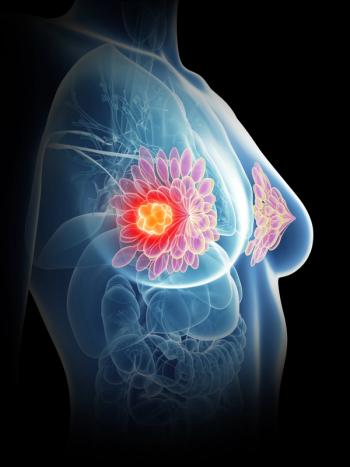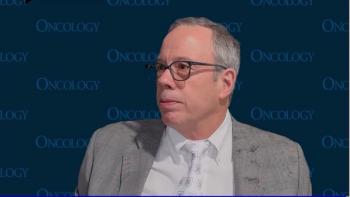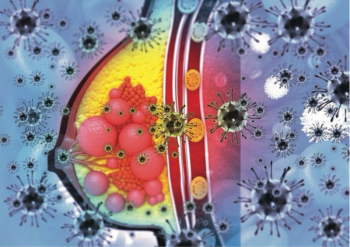
Oncology NEWS International
- Oncology NEWS International Vol 10 No 6
- Volume 10
- Issue 6
ACS and NCCN Issue Cancer Pain Management Guidelines for Patients
NEW YORK-One out of every three people being treated for cancer (and more than three quarters of those with advanced disease) has significant pain, but patients often lack the information to effectively manage their pain and get relief. Now, a new resource booklet is available from the American Cancer Society (ACS) and the National Comprehensive Cancer Network (NCCN) to enable cancer patients to collaborate more effectively with their physicians to make informed decisions about available pain treatment options.
NEW YORKOne out of every three people being treated for cancer (and more than three quarters of those with advanced disease) has significant pain, but patients often lack the information to effectively manage their pain and get relief. Now, a new resource booklet is available from the American Cancer Society (ACS) and the National Comprehensive Cancer Network (NCCN) to enable cancer patients to collaborate more effectively with their physicians to make informed decisions about available pain treatment options.
Cancer Pain Treatment Guideline for Patients translates the expertise of NCCN’s professional oncology practice guidelines into a patient-friendly resource outlining appropriate treatment. Patients thus have access to a plain language version of the same guidelines that physicians use.
The cancer pain guidelines provide specific information for patients on the variety of options available to treat pain, on pain assessment tools, and on the obstacles to pain relief. Background information on the types and causes of cancer pain is also included, as well as a glossary. This information empowers patients and family members by helping them to:
Ask the right questions.
Understand the treatment options.
Participate fully in patient care and provide psychological support.
It also gives providers a common ground on which to begin discussions with their patients. "Patients and care-givers often buy into the myth that pain is an inevitable part of cancer, and therefore think, ‘Why talk to your doctor or nurse about it?’ They just suffer in silence," said Richard Payne, MD, chief, Pain and Palliative Care Service, Department of Neurology, Memorial Sloan-Kettering Cancer Center.
Dr. Payne was one of a panel of cancer experts (all from NCCN member institutions) who helped launch the cancer pain patient guidelines at a media conference.
Despite scientific and medical advances that have provided a better understanding of pain and its treatment, much pain still goes unrelieved. "There is a gap between what is achievable and what the reality actually is," Dr. Payne said in an interview. "Although more than 88% of patients can be treated successfully, other studies indicate that pain is not optimally treated in almost half of patients."
The panel stressed that doctors can’t know about pain unless their patients tell them about it, and that many patients do not ask for or get help because they have common misperceptions regarding pain control.
An estimated 42% of cancer patients do not get sufficient relief from pain because of patient-doctor communication barriers, according to a recent study from the University of California, Davis. These include patients not knowing their options or fearing being perceived as "bad" patients for talking about pain. Some patients worry that talking about pain treatment may keep their physician from treating their cancer aggressively.
"Undertreatment of pain is a significant public health problem in our country," said Robert C. Young, MD. "The NCCN/ACS patient pain management guidelines will make patients informed communicators, and collaborators with their physicians, in managing pain and preserving a good quality of life."
Dr. Young, who is president-elect of the American Cancer Society and president of Fox Chase Cancer Center, said the guidelines give patients the means to document and monitor pain through the cancer treatment process. Using the guidelines, patients can learn how to rate their pain on a 0 to 10 scale and discuss commonly used painkillers.
Another major barrier to pain management may be political and institutional in nature. Some insurance companies will not cover the cost of pain medications, and Medicare does not pay for oral medications delivered outside the hospital setting, said Betty Ferrell, RN, PhD, professor of nursing research and education, City of Hope Cancer Center.
Dr. Ferrell told ONI that the cancer pain guidelines are an important first step in educating the public, who can eventually bring about change in the current policy to make coverage of pain management mandatory.
The NCCN in partnership with the American Cancer Society intends to develop patient guidelines for the 10 most frequently occurring cancers, as well as a series of cancer supportive care patient guidelines, of which the pain guidelines are the first, said William T. McGivney, PhD, chief executive officer of the NCCN. At this time, the series includes breast cancer, prostate cancer, and colorectal cancer, as well as the pain guidelines.
Articles in this issue
over 24 years ago
Xeloda Approved for Metastatic Colorectal Cancerover 24 years ago
Walking Improves Fatigue, Sleep in Breast Cancer Patientsover 24 years ago
Bezwoda 1985 Breast Cancer Transplant Study Fraudulentover 24 years ago
Severity of Hot Flashes Worse in Breast Cancer Survivorsover 24 years ago
Tamoxifen Prevents BRCA2, But Not BRCA1, Breast Cancerover 24 years ago
High TIMP-1 Levels May Promote Prostate Cancer Growthover 24 years ago
Barriers to Colorectal Cancer Screening Among Minoritiesover 24 years ago
Epoetin Reduces Need for Red Blood Cell Transfusionsover 24 years ago
French Researchers Discover How HIV Makes First Contactover 24 years ago
‘Virtual Supercomputer’ Program for Cancer Drug DiscoveryNewsletter
Stay up to date on recent advances in the multidisciplinary approach to cancer.

















































































